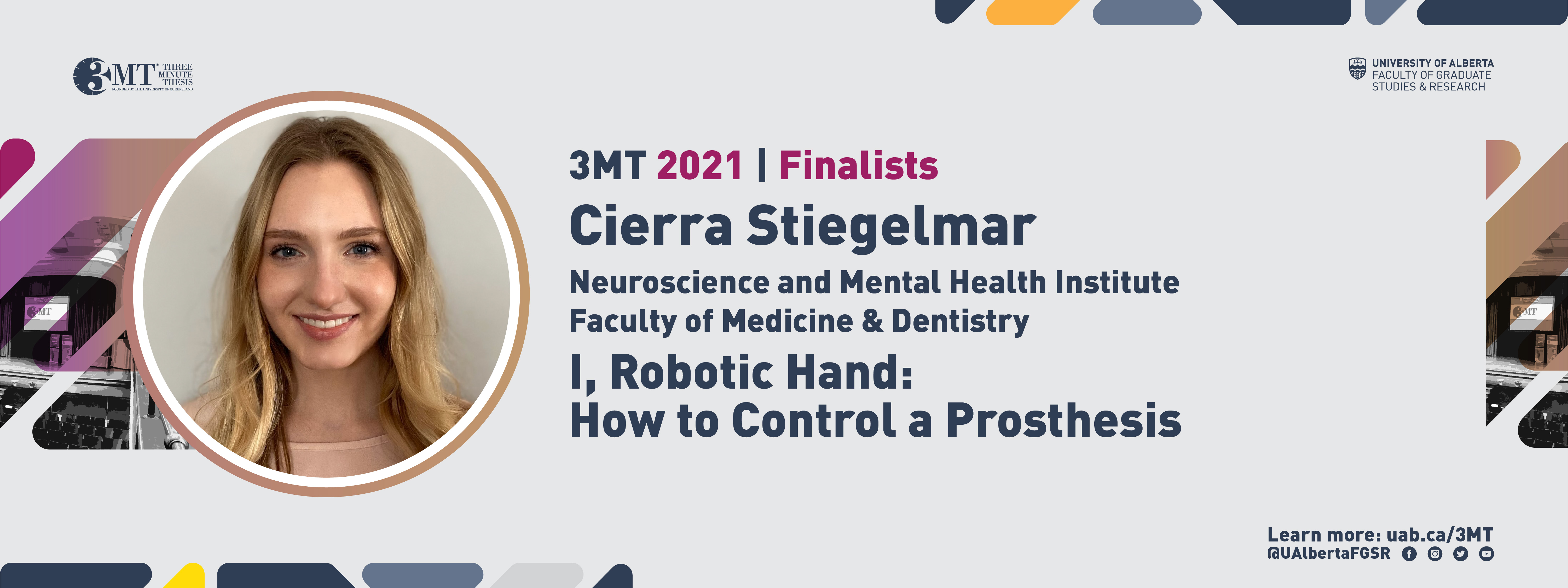Cierra Stiegelmar
Introduce yourself...
I am a first-year Master's student in Neuroscience studying prosthesis control at the Bionic Limbs for Improved Natural Control (BLINC) Lab. I chose this area of research because I enjoy the interdisciplinary nature of the work. I get to collaborate with fellow neuroscientists, computer scientists, engineers, and clinicians to lead to impactful findings. I am looking forward to sharing my research at the 2021 3MT competition!
What are you researching and what do you hope comes out of your research?
I am researching how people can develop a feeling of control, or sense of agency, over an upper-limb prosthesis. In particular, I’m studying the sense of agency by measuring how the brain processes time. When we move, our brain doesn’t always experience time as linear – it clumps information together or spreads it out, depending on what happened. I can use this time illusion to study a sense of agency over a prosthesis and assess the level of control. I hope that my work can lead to improvements in prosthesis control assessments and that this results in better functionality for prosthesis wearers in the future.
How did presenting a Three Minute Thesis (3MT) help explain your research to the public?
The 3MT made me think about how to explain my project in the best way possible. In planning my talk, I realized that my explanations could be jargon-heavy, which ultimately limited the accessibility of my work. The 3MT gave me very little time to talk about my research, so every word had to be intentional. It also challenged me to think creatively and use examples or analogies to help explain what I do. In the end, I had a focused presentation that was simple, fun, and easy to understand. I’m thankful that the 3MT helped me develop a better way to explain my project to people who aren’t familiar with my discipline because, at the end of the day, research should be for everyone.
What inspires you to do research?
I am inspired by the work of the researchers who have come before me and laid the foundation for my current project. This includes the work of my current lab members at the BLINC Lab. As Isaac Newton once said, “If I have seen further, it is by standing on the shoulders of giants.” These researchers are the giants that make my interdisciplinary project possible.
What are three keywords important to your 3MT?
prosthesis, agency, time
